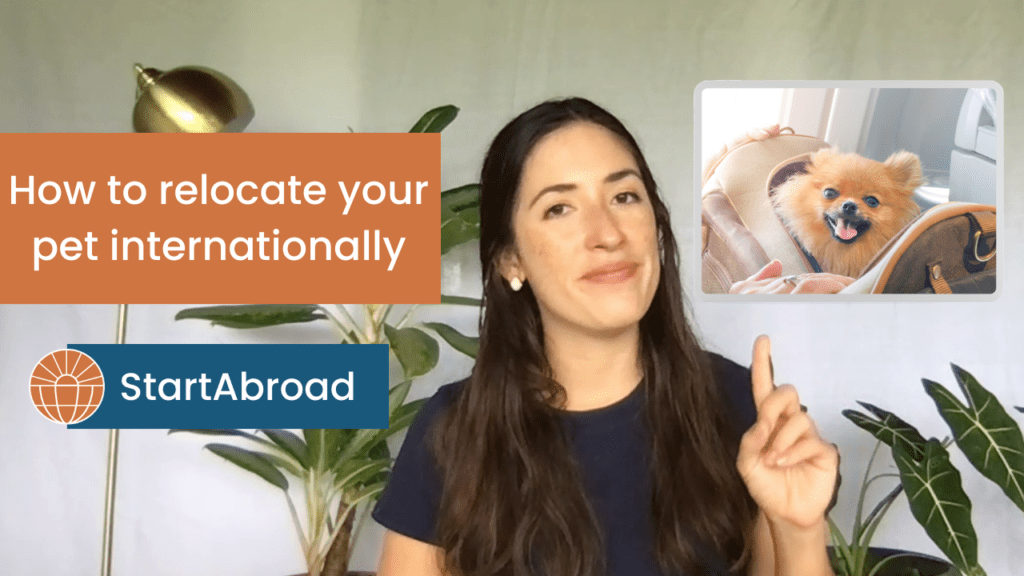Costa Rica shipping
Costa Rica Country Guide
Everything you need to know about moving to Costa Rica
How to Ship Your Belongings to Costa Rica
There are a number of ways to get your belongings down to Costa Rica
For many expats, how to get belongings down to Costa Rica is a fundamental question. The truth is, there are various options that range from selling everything and buying new, to shipping large containers. In this overview, we’ll review when it makes sense to ship, then how to do so safely and economically.
Navigate page
Overview of Import Duties in Costa Rica
Import duties in Costa Rica are typically assessed and collected at the time of customs clearance when goods or items are brought into the country. Import duties are payable when you are importing products, goods, or vehicles from abroad into Costa Rica. You should expect to pay these duties when you go through the customs clearance process, which usually takes place at designated customs offices, ports, or airports. The exact amount of import duties you need to pay depends on the nature of the imported items, their value, and the relevant tariff categories or rates set by the Costa Rican government.
Import duties in Costa Rica vary based on the category and type of imported goods. The country follows a complex tariff schedule with different rates for different products. The following is a general list of import duties as of 2022:
- General Goods: Most items fall under this category, with import duties ranging from 1% to 15% based on the type of product.
- Textiles and Clothing: Import duties for textiles and clothing can range from 15% to 45%.
- Electronics: Electronics and gadgets typically have import duties of 15% to 30%.
- Automobiles: Import duties on vehicles can be quite high, ranging from 50% to 79%.
- Alcoholic Beverages: Import duties for alcohol vary depending on the type, with rates starting at around 15%.
- Tobacco and Cigars: Import duties for tobacco products can be substantial, often exceeding 50%.
- Appliances: Household appliances typically have import duties ranging from 15% to 30%.
- Luxury Goods: High-end and luxury items can have considerably higher import duties, sometimes exceeding 50%.
- Pharmaceuticals: Import duties on medicines and medical supplies are generally low, around 1% to 5%.
- Food Products: Import duties on food products can vary widely depending on the specific item, with rates from 1% to 45%.
- Pet accessories: Pet accessories typically have an import duty of around 14%
Your Options to Bring Your Belongings to Costa Rica
There are a few common ways to expats bring their belongings to Costa Rica: 1. sell at home and buy new in Costa Rica, 2. bring “extra luggage” on the plane, 3. ship a pallet, or 4. ship a container. Most expats end up using some combination of all four, however here is a quick breakdown of the pros and cons of each option.
- Selling items at home and buying new in Costa Rica: Opting to sell most belongings before relocating and purchasing new items in Costa Rica can be a practical approach.
- Pros
- Simplifies the moving process and reduces shipping costs.
- Allows for a fresh start with new, locally sourced items.
- Minimal customs and importation paperwork.
- Cons
- May involve replacing essential or sentimental items.
- Purchasing new items can be costly, depending on your needs.
- Limited to locally available products, which may differ from what you’re used to.
- Pros
- Purchasing extra baggage on your flight: Some airlines allow passengers to purchase extra luggage at affordable rates. It’s not uncommon for some expats to purchase 8-10 extra bags, and bring down a considerable amount of belongings that way.
- Pros
- Fast and hassle-free
- Can be much more economical than shipping a pallet or container
- No customs or shipping-related delays.
- Cons
- Limited space, typically restricted to airline baggage policies
- Not suitable for larger or bulkier items like furniture or appliances
- An agent at customs may flag you and require import duty payment
- Pros
- Shipping a pallet: Shipping a pallet is a smaller-scale option where you transport a limited number of items on a pallet. Suitable for individuals with fewer belongings or individuals looking to reduce costs.
- Pros
- Quicker shipping and lower costs compared to a full container.
- Ideal for essential items or sentimental possessions.
- Easier to manage customs procedures.
- Cons
- Limited space for belongings.
- May not accommodate larger furniture or appliances.
- Pros
- Shipping belongings in a container: This option involves packing your household items and personal belongings into a shipping container. It’s ideal for individuals or families with a significant volume of items.
- Pros
- You can bring your cherished possessions and familiar items from home.
- More cost-effective for larger households.
- Suitable for items that are not easily replaceable.
- Can import automobiles
- Cons
- Longer shipping times, typically taking several weeks to arrive.
- Higher shipping costs, including container rental, handling, and customs fees.
- Requires thorough planning, packing, and customs clearance.
- Pros
How to bring belongings to Costa Rica is a deeply personal decision that will depend on a number of factors. If you’d like guidance on how to approach this issue, please reach out to [email protected] or book a free 15-minute consultation call with a relocation specialist.
Not sure where to start?
Speak with an international relocation specialist for free
What to Bring vs. What to Sell When Moving to Costa Rica
When moving to Costa Rica from the US, it’s important to consider what items to bring with you and what might be more practical to purchase in Costa Rica. It will be much more economical to simply sell certain types of items and buy new ones once you’ve arrived.
Items to Bring from the US: Bringing certain items from the US can help you ensure quality and save money. These include electronics, like laptops and cameras, as they are often more expensive in Costa Rica. If you have specific prescription medications, bring an adequate supply until you can establish a local source. Personal items like favorite clothing or sentimental possessions should also come with you.
Items Better to Buy in Costa Rica: Costa Rica offers a wide range of local products and services, making it more practical to buy certain items locally. These include furniture, appliances, and home decor to accommodate the different electrical standards. Locally grown fresh produce and spices are widely available, so there’s no need to bring large quantities of food. Furniture, home decor, and gardening tools are best purchased in Costa Rica to suit local styles and needs. Medical and dental services are accessible and of high quality, so bring only your medical records and prescriptions.
When buying new home goods in Costa Rica, consider making the trip to a duty-free zone, like Golfito. Local Facebook groups, Facebook Marketplace, Encuentra24, and Craigslist can be great ways to find good deals on household items for reasonable prices.
How to Ship Things to Costa Rica
Shipping your belongings to Costa Rica involves a series of important steps to ensure a smooth and hassle-free relocation experience. Here’s a detailed breakdown of the process:
- Choose a Reputable Shipping Company: Begin by selecting a reliable international shipping company with expertise in handling moves to Costa Rica. Research and compare different options to find the one that best suits your needs. Reach out to [email protected] if you’d like to be put in touch with a best-in-class shipping company based in Costa Rica.
- Consult with Your Shipping Company: Once you’ve chosen a shipping company, consult with them to get a clear understanding of the entire process. They will provide guidance on packing, insurance, and customs requirements specific to Costa Rica.
- Prepare a Detailed Inventory: Create a comprehensive inventory of all the items you intend to ship. This inventory should include descriptions of each item, their estimated value, and their intended use.
- Properly Label Your Boxes: Ensure that all your boxes are labeled clearly and accurately. This makes it easier to identify and sort your belongings during both the packing and unpacking stages.
- Understand Customs Regulations: Familiarize yourself with Costa Rica’s customs regulations, as they vary based on the type of items you’re importing. Some items may be subject to import duties and taxes.
- Gather Necessary Documentation: Collect all required documentation, such as your passport, visa, and a complete inventory list. These documents are essential for customs clearance.
- Pay Import Duties and Taxes: Depending on the items you are shipping, you may be required to pay import duties and taxes. Work closely with your shipping company and customs authorities to ensure all financial aspects are in order.
- Be Prepared for Customs Inspections: Expect customs inspections of your belongings upon arrival in Costa Rica. Customs officials will verify the contents of your shipment to ensure it aligns with your inventory.
Keep in mind that it typically takes between 2-4 months for items shipped in containers to arrive and clear customs.
Costs of Importing a Car to Costa Rica
Automobile import duties in Costa Rica are relatively high and can significantly impact the cost of importing a vehicle into the country. These import duties are imposed by the Costa Rican government and serve as a source of revenue while also helping to protect the domestic automotive industry. Here’s a high-level breakdown of how automobile import duties work in Costa Rica:
- Tariff Categories: Costa Rica classifies vehicles into different tariff categories based on factors such as engine size, type, and value. Different categories have varying duty rates. For example, smaller vehicles with smaller engines typically have lower duties, while larger, more powerful vehicles have higher duty rates.
- Ad Valorem Tariff: The primary component of import duties for vehicles is an ad valorem tariff. This means that the duty is calculated as a percentage of the vehicle’s declared CIF (Cost, Insurance, and Freight) value. The ad valorem rate can range from 50% to 79% or more, depending on the specific tariff category. Luxury vehicles tend to have the highest ad valorem rates.
- Fixed Duties: In addition to the ad valorem tariff, there may be fixed duties applied to certain vehicle categories. These fixed duties are a set amount, independent of the vehicle’s value. For instance, electric vehicles often have lower fixed duties compared to traditional gasoline-powered cars.
- Exemptions and Discounts: Some electric and hybrid vehicles may qualify for exemptions or reduced duty rates as part of the government’s efforts to promote environmental sustainability. Additionally, certain types of vehicles, like buses or trucks used for public transportation, may have different duty structures.
- Documentary Requirements: Importing a vehicle into Costa Rica involves extensive documentation, including a bill of lading, the original title or certificate of ownership, a vehicle inspection certificate, and other related paperwork. It’s essential to ensure that all documents are accurate and complete to avoid delays and additional costs.
- Customs Broker: Due to the complexity of the process and the changing regulations, many people opt to use a customs broker when importing a vehicle. A customs broker can help navigate the bureaucratic requirements and ensure that all customs duties and taxes are correctly calculated and paid.
Keep in mind that some temporary residency options, like the Inversionista (Investor) Visa do allow for the importation of up to two vehicles duty-free.
Vehicle importation duties are constantly changing. Please reach out to [email protected] if you have specific questions about your situation.
Costa Rica client reviews

We would highly recommend using StartAbroad for your relocation needs… [Their relocation] program is very comprehensive and they anticipated our every needs to make sure that our move went smoothly.
We would have made many mistakes on our own… [StartAbroad was] worth every penny and now looking back we can’t imagine having made this move without their assistance.
Clay & Sarah (& Sam)
Costa Rica Concierge Clients

It was an ultimate pleasure working with StartAboard, from start to finish they took care of every minor detail. Their service took loads of pressure off my hands as you can imagine all the small details and variables you have to consider when moving to a different country.
I would highly recommend StartAboard if you are looking to relocate.
Reggie W.
Costa Rica Concierge Client

[The team at] StartAbroad were absolutely fantastic… These guys saved our family so much time – it’s quite difficult to quantify the value of their service. One thing for sure, for the small amount that they charged us for facilitating our digital nomad visas – in comparison to the huge amount of time we saved, is substantial!
Very pleasant to work with, very professional, clearly they care very much about what they are doing and their work reflects this.
Mateo
Digital Nomad Visa Support
Join our mailing list
Receive monthly newsletters, special offers, insider information, and more.






